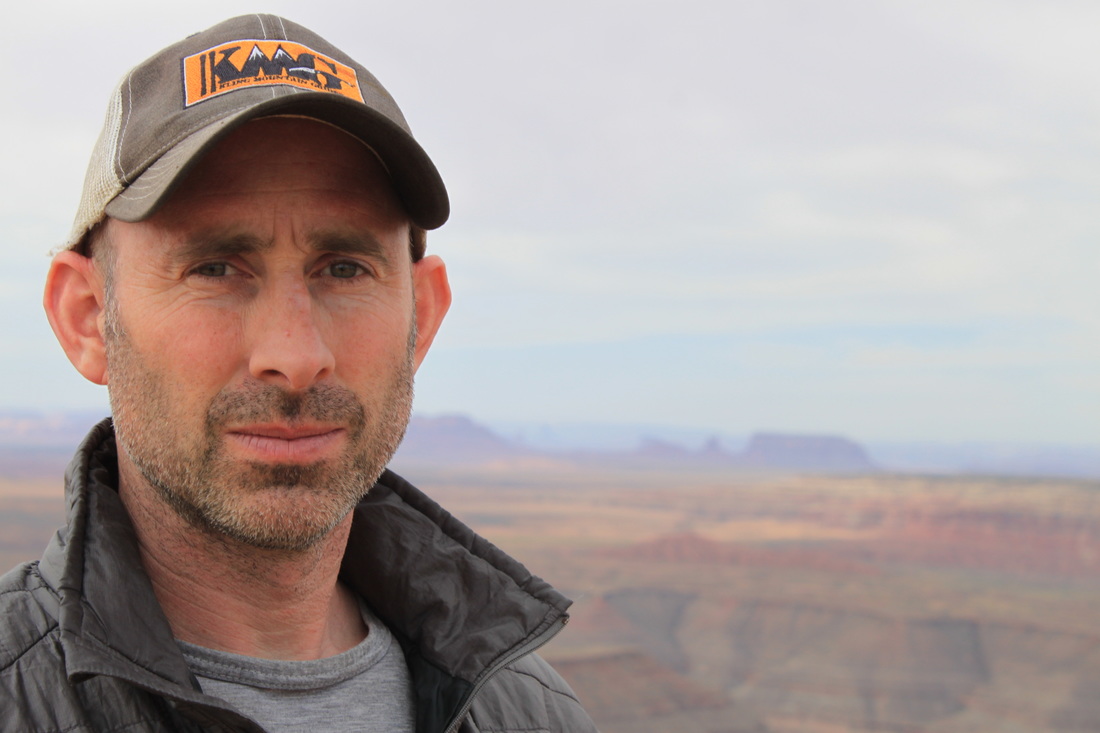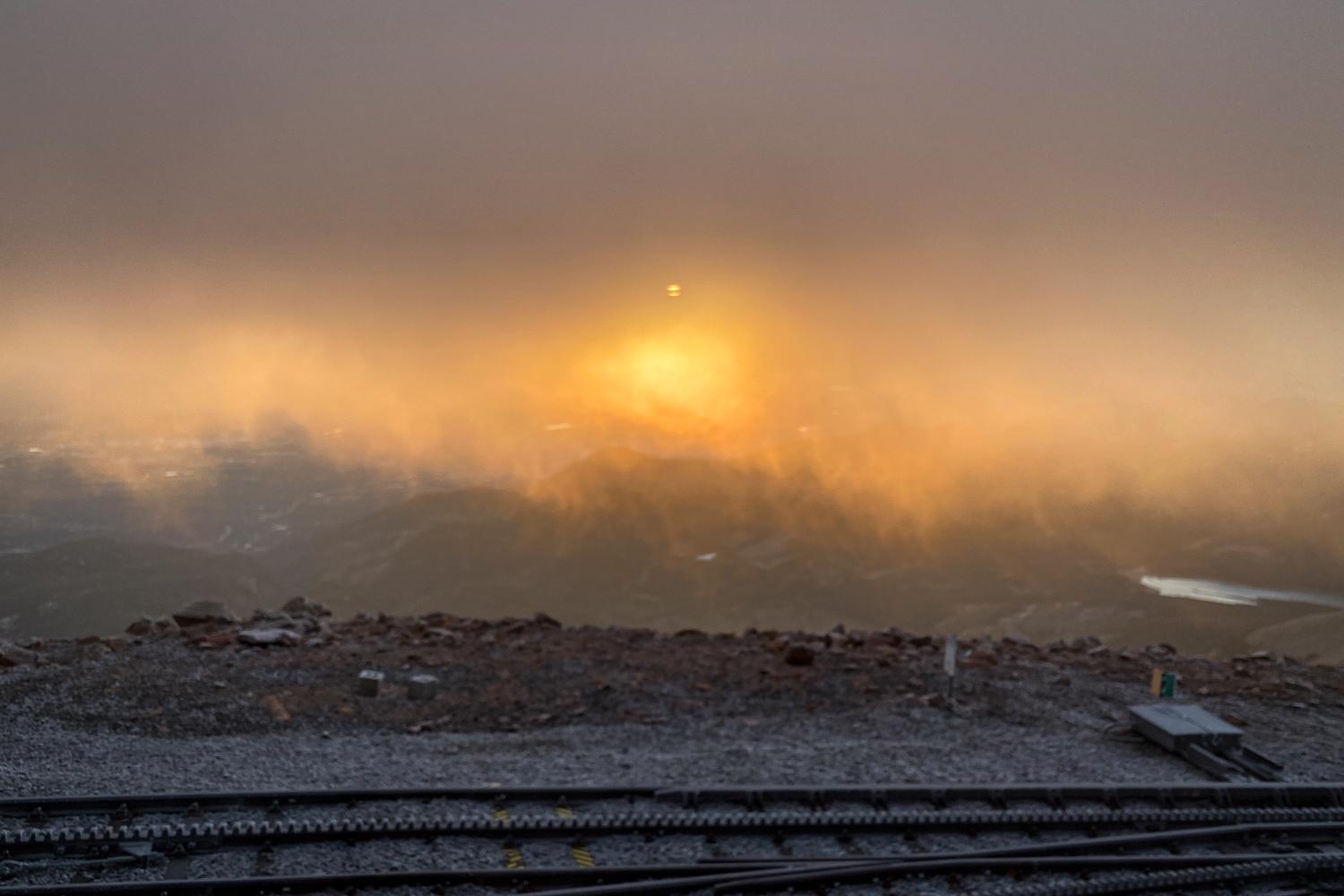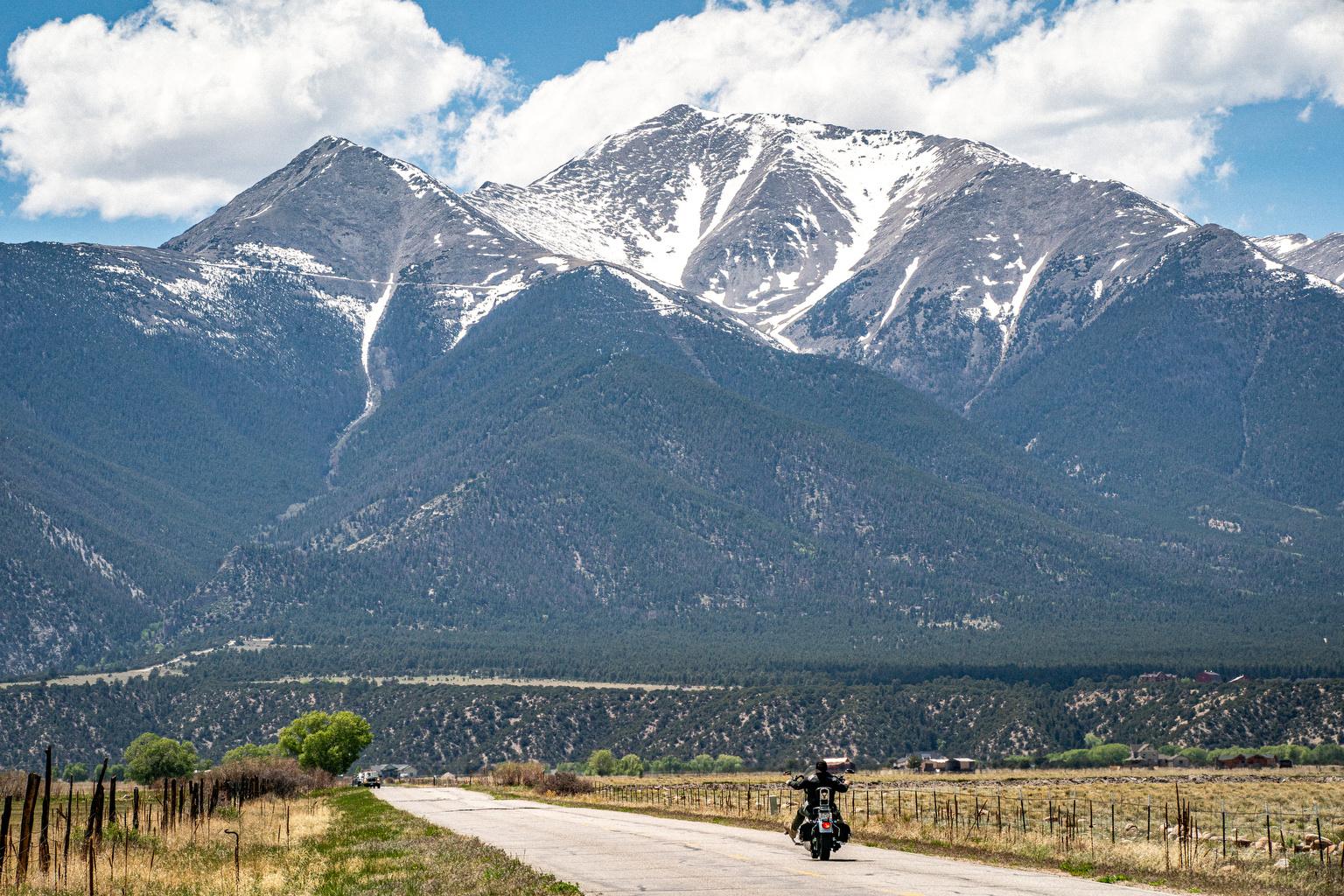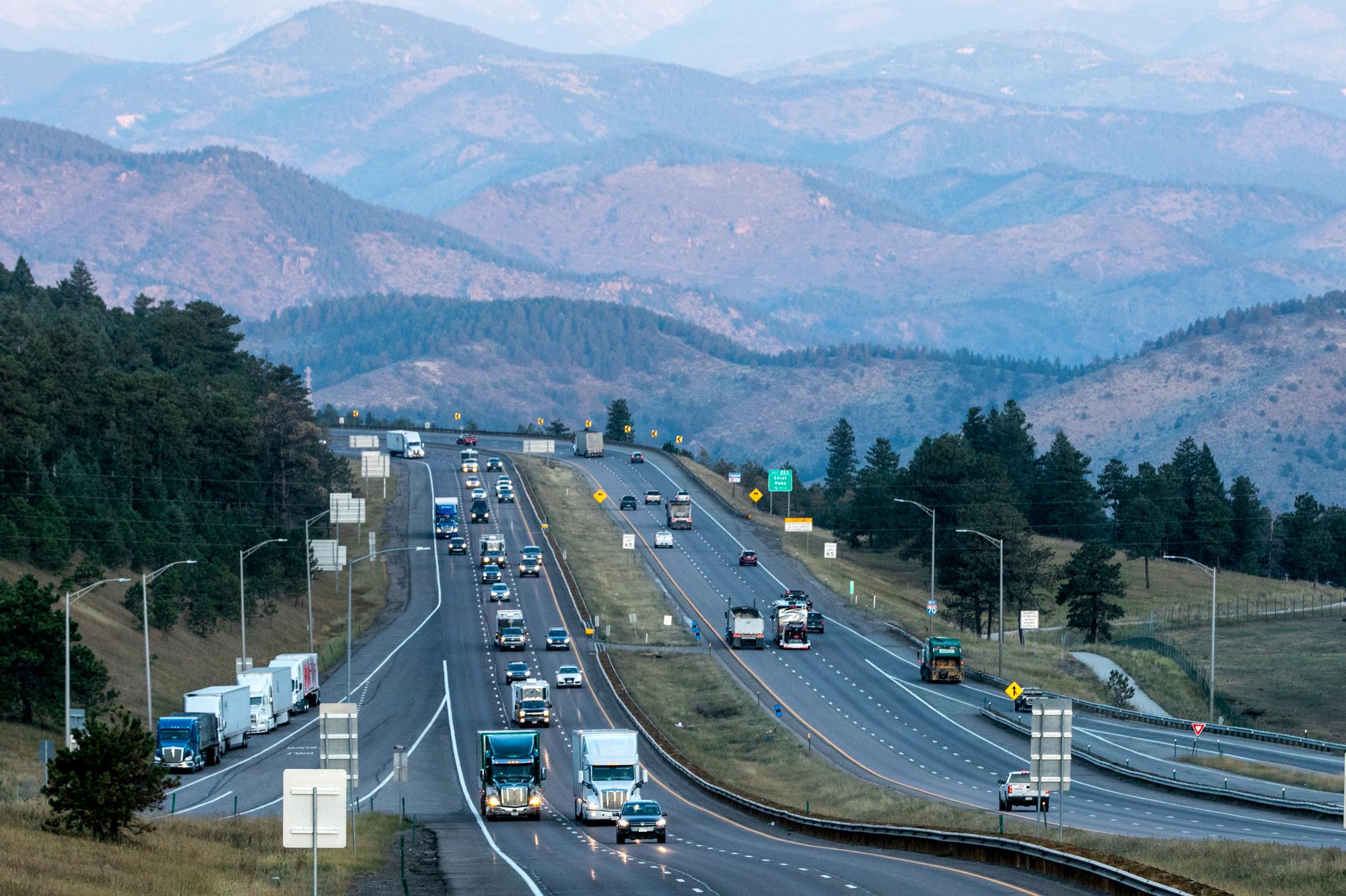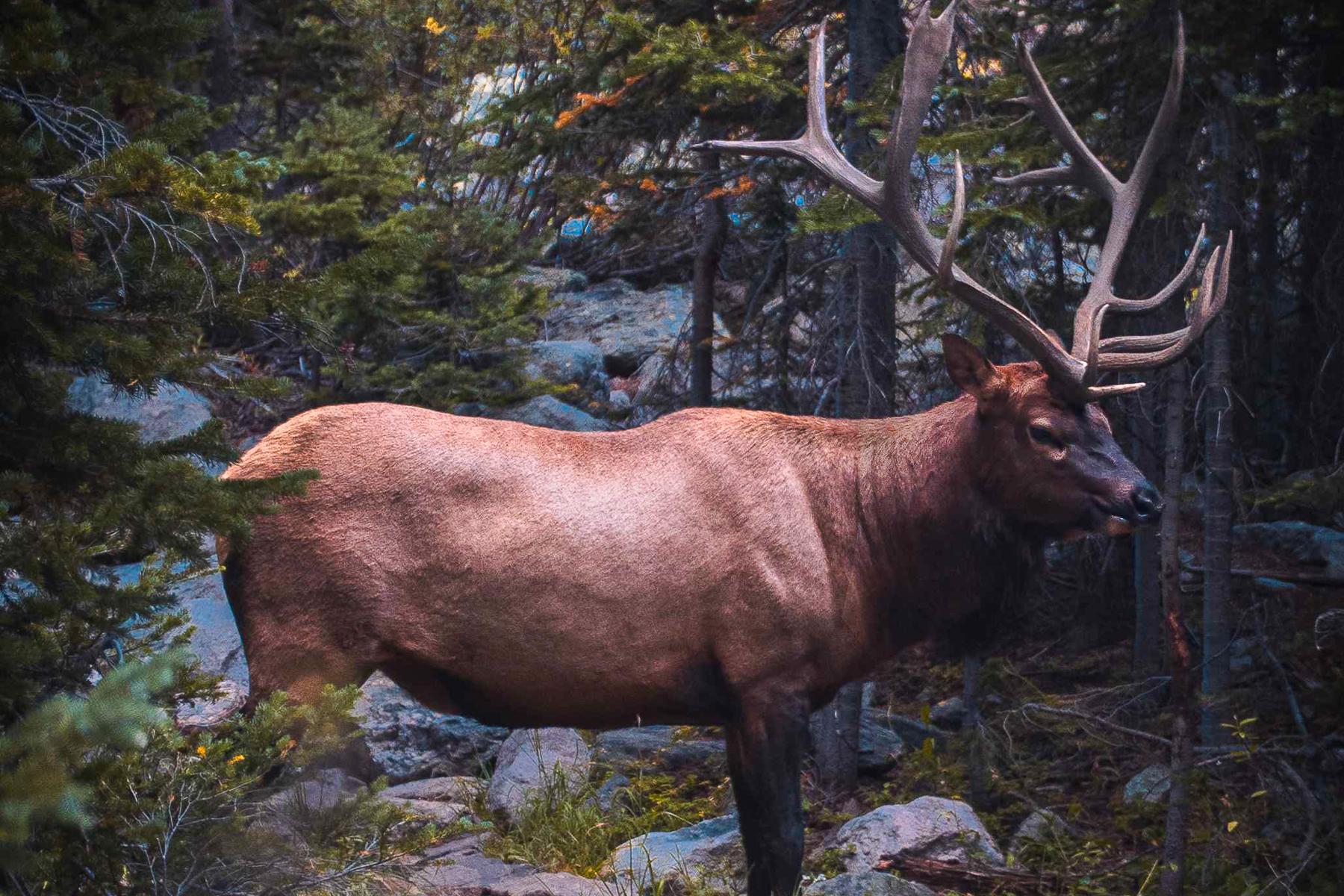Chapter
- 6 -
This Is HomeWhere is home? Home is where you shall find your happiness.
— edward abbey
April 30 Pitkin, Colorado
An hour after rising from the lumpy mattress at the Pump and Pantry, I drive into eastern Colorado, where a sign jutting from the landscape of sunburned grass and tan dirt proclaims, “Colorful Colorado.” Another two hours of arrow-straight interstate driving, and I veer onto I-76 and enter the din and racket of Denver. I pass the industrial- ized northern edge of the city, where factories and refineries cough soot into the air. I snake onto I-25 and drive the eastern flank of Denver, passing stadiums and arenas and the vinyl-sided suburbs that over- whelm all open land from the urban center to the Front Range Mountains, which are still covered in snow. Sixty-six years earlier, Abbey saw a similar view of the Front Range. He wrote, “Crowned in snow (in July), was a magical vision, a legend come true: the front range of the Rocky Mountains. An impossible beauty, like a boy’s first sight of an undressed girl.” Once I reach those mountains, I exhale. I’m no longer exposed after so many months on the plains. On CO-285, traffic thins until I relax my shoulders, my back, and my hands, which have been clenched to the steering wheel since entering Denver. After three hours of mountainous roads—passing herds of elk and scattered pronghorns near Fairplay and stunted pines covering hills near Buena Vista—I leave windy CO-285 for windier CO-50 as it climbs over Monarch Pass. At the top, I can see for nearly a hundred miles. Mountains and hills and valleys and roaring rivers and snow- capped peaks. Home. I turn north onto CO-76, which weaves along a thin valley floor. The hills on either side are scrub brush and sage and a few scattered pines. As I drive closer still to Pitkin, the slow-sloped hills morph into coniferous mountains that lean closer toward each other until there is only space in this valley for the snaking road and gurgling Quartz Creek. Here, it is dark and soft and protected, and there are places to hide from all the hawks soaring above. I enter Pitkin, a town once filled with three thousand prospectors who stole this land from the Ute Indians and transformed this valley into a thriving and chaotic town of bars and general stores and whorehouses. Now the silver is mostly gone and the miners have all left. Only sixty-six people call this tight-valleyed town home year round. Businesses have been reduced to two seasonal general stores, one seasonal restaurant, a dying hotel, and the post office, which is open all year. Though during summer, a few hundred Texans and Kansans ride their four-wheelers and Jeeps out onto the mining roads that scar our mountains. On the edge of Pitkin, I turn onto a dirt road that leads toward Fair- view Peak. I grind the truck into four-wheel drive. After a few miles, I leave the dirt road for a rutted two-track that was once used by miners as they hauled loads of silver on the backs of broken burros. I make a final turn down an almost hidden driveway and drive until I reach a ten-by-twelve foot cabin, tucked hard and tight against the hillside, camouflaged by fir, pine, and aspen. I park the truck. I press down the emergency brake. I shut off the engine. The only sound now is the pinging of the engine. I open the door. I step from the truck. I stretch my arms. I slam the truck door shut. I arch my back. Then I stare east for the first time in hours (or days—or months, it seems) at my tiny cabin and beyond it the Continental Divide, those peaks that claw fourteen thousand feet into the sky.
I step onto the downstairs porch. I lean against the railing and look off into those mountains. Those dark and mysterious moun- tains. Unruly mountains. Those mountains that create spines that crisscross the center of Colorado. This is home: a hand-built shack located on the steep lean of Islet Mountain, a mountain that tumbles off the side of another nearby mountain—Terrible—which reaches for and almost touches the big- gest mountain in this region—Fairview. This cabin has cedar-sided exterior walls and a steep corrugated metal roof. Inside, there is a table for eating meals and two small benches in a corner to read books beneath the soft glow of an oil lamp. The woodstove fills the third corner. A rickety ladder climbs to the second-story loft. On the second story—in the loft—a rocking chair sits in the corner. Here I read during the coldest hours, the upstairs warmer than below. A futon mattress on the floor. Dishev- eled sheets and blankets keep me warm when the temperature drops below freezing. Shelves hold work clothes—hickory shirts, overalls, double-kneed work pants—and all the books I still need to read. A wall of books. Outside, this cabin has two porches—one directly above the other. During cool mornings, I sit on the upstairs porch and let the sun (slowly rising over the Continental Divide’s Mount Arp) warm me. On hot summer days, I stay on the shaded lower porch and bless every breeze that rubs against me (those lonely days, the breeze reminds me of a lover). But what makes this home? I wonder. Abbey wrote in The Journey Home, “There was nothing out there. Nothing at all. . . . Nothing but the silent world.” Abbey seemed to always move toward the silent world, the edges of the map. He spent months at remote fire lookouts and at the seventy-thousand-acre Whittell Wildlife Preserve. He backpacked not just into the wilderness but into deepest wilder- nesses. The allure is the surround of a silent world. Abbey also wrote in The Journey Home that “for the sake of inner equilibrium there has to be at least one mountain range on at least one of the four quarters of my horizon—and not more than a day’s walk away.” In Grand Rapids, I search for any mountain to tether me to place. Here, my cabin leans into Islet Mountain. West Mountain rises a quarter mile away. Then, twelve-thousand-foot- tall Terrible Mountain lingers just a two-hour hike away. Finally, thirteen-thousand-foot Fairview Peak is just an hour’s hike beyond Terrible. And from Fairview, I am surrounded by five or six moun- tain ranges and countless mountains. This world of mountains set- tles my inner equilibrium. In his introduction to The Journey Home, Abbey called himself “one who lives and loves by choice far out on the very verge of things, on the edge of the abyss, where this world falls off into the depths of another.” And that, too, seems where I best like to be. I’d rather camp alone at Sleeping Bear Dunes than go to some downtown bar. I’d rather build a cabin on a quiet mountain than own a house in the suburbs. Places feel most like home when they are closest to being beyond. It is simply home because I long to live, as Abbey also wrote in The Journey Home, “in the heart of the little known.” This cabin is located exactly there. When people ask where my cabin is located, I tell them it is near Gunnison. If they tilt their head quizzically, I add, “It’s near Crested Butte.” If they still don’t recognize that tourist town, I add, “Four hours from Denver.” Only then do they nod their heads. And only then do I know I’ve found a place remote enough to call home. These summer days, Haus and I work on our two cabins, both of which are located on the edge of Islet Mountain. This summer, we plan to build a shed, work on my loft, and build shelves. After work, we will drink beers and talk about the last twenty years, how we always dreamed of this—this right here—two cabins in the woods, being able to walk from one cabin to the other, sharing a mountain- side. “Can you believe it,” one of us might say to the other. “We built these.” As I look at the world Haus and I have created, the world we live within, I’ll also think of what Haus and I have built over our twenty- year friendship. Abbey’s right when he wrote in his journal, “Friend- ship’s a rare and elusive gift in this shattered, chaotic, frantically moving society of ours.” And this gift of having Haus around is necessary as I go on this fool’s journey, because we only go on a fool’s journey when we’ve grown desperate, when we’re in need. And that is exactly when we need best friends. But before this sally begins, Haus and I will look at our work- manship. When we started this project, neither of us were carpenters. I’m still not. I’m only good at the rough cuts. Still, we’ve built two cabins. And they are mirror images of us. No, that isn’t right. These cabins are us, no less a part of us than our arms and legs. After Haus and I have finished our beers, we will hike the trail that leads up Islet Mountain to his cabin-home. His wife, Karen, will have dinner stewing on the stove. Two-year-old Atalaya will jump into Haus’s arms. After he hugs her deeply, he will hand her to me. I will hold that little girl in my arms and kiss her cheek. Then I will say, “I need to check for bears under your armpits.” I will tickle her until this cabin-home is filled with the high howls of Atalaya. Her laughter will fill every corner of the room. The four of us will sit to eat while Hector the dog lies at my feet. The ghost of Abbey will reside in the room. I will hear him whisper from the loft, his words ringing from The Fool’s Progress, “This world, these friends, what more could a body want?” Yes, Abbey, yes. That’s why I drove hard and fast these last two days.
Outside this cabin, the world will grow ever darker, and with the darkness will grow ever more mystery. All those dark corners, those unseen things. Darkness reminds me of where I am off to next—the searching. The long road ahead that wanders through harsh deserts. But before I begin that journey, I will linger here for another moment or two.
Reprinted with permission from Finding Abbey: The Search for Edward Abbey and His Hidden Desert Grave by Sean Prentiss, published by the University of New Mexico Press, © 2015 by Sean Prentiss
| 